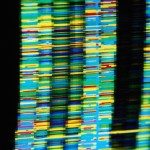Link to Pubmed [PMID] – 29885541
Autoimmun Rev 2018 Aug;17(8):739-745
Primary antiphospholipid syndrome (PAPS) and antiphospholipid syndrome associated to lupus (SAPS) have several overlapping characteristics. As systemic manifestations are also reported in patients with PAPS, and as a subgroup of PAPS patients could evaluate to a SAPS, the differentiation between the two types of APS could be performed based on the clinical experience of the medical teams and is related to a variety of clinical, biological, histological and genetic features. Several data are available in the literature with respect to the identification of distinctive features between these two entities. However, there are some limitation in the interpretation of results issued from studies performed prior to updated Sydney criteria. Based on recent data, a certain number of features more frequent in one type of APS as compared to the other could be distinguished. The major differentiation between these two entities is genetical. New genetic data allowing the identification of specific subgroups of APS are ongoing.




